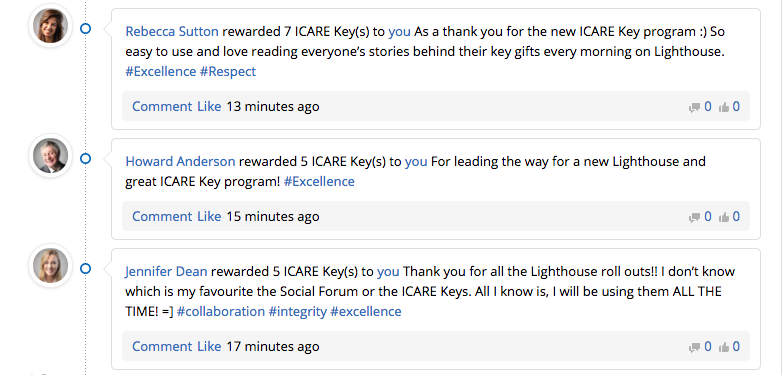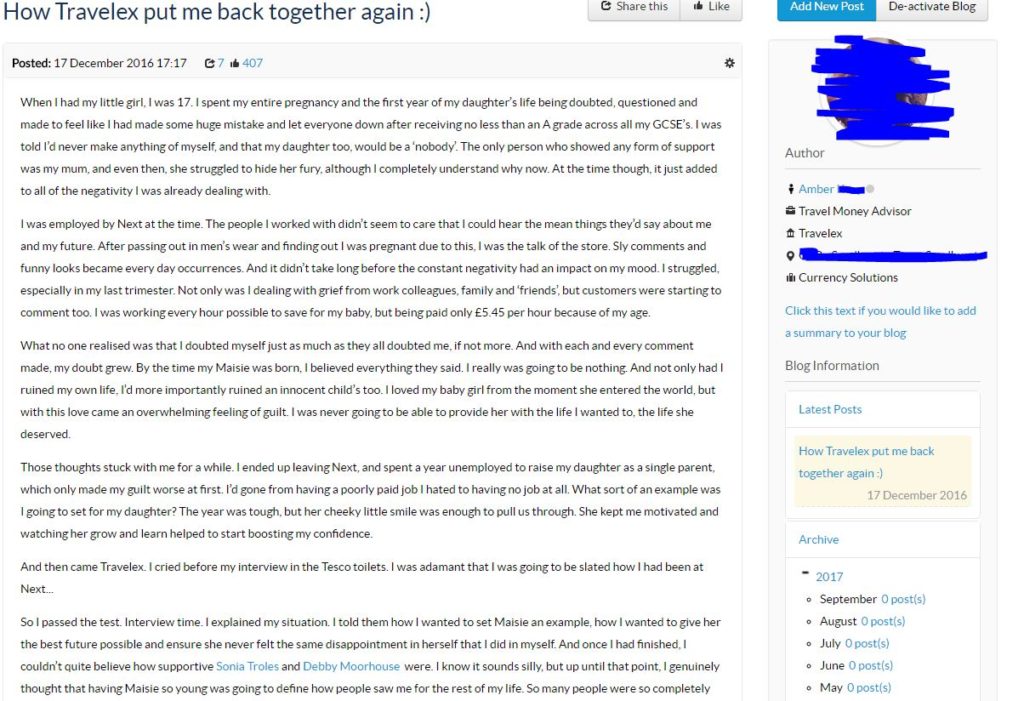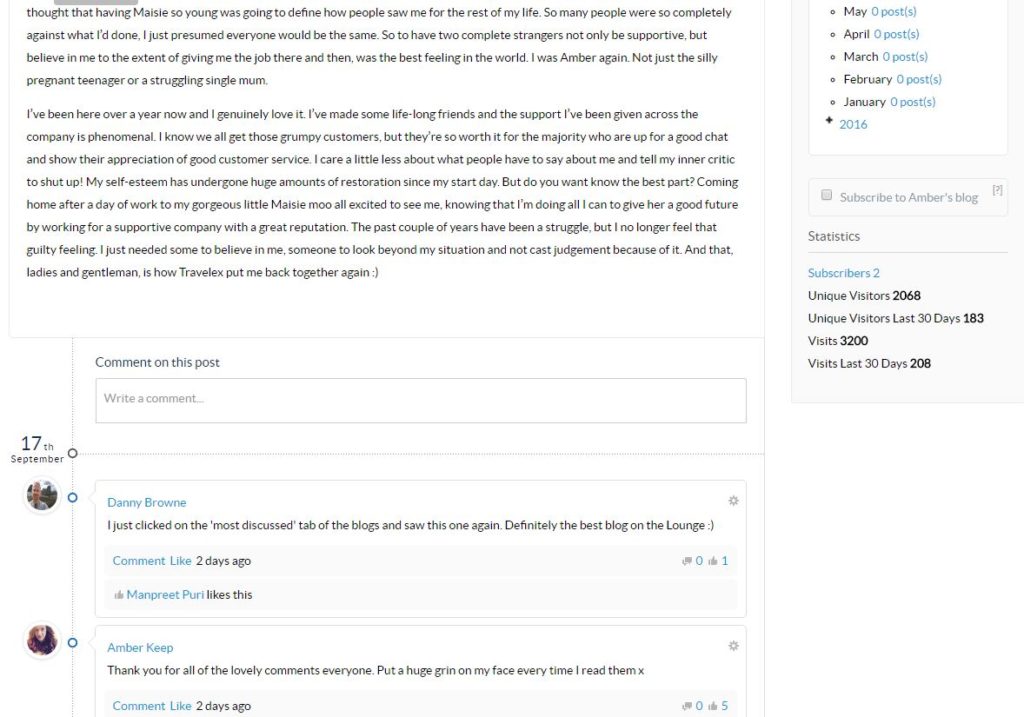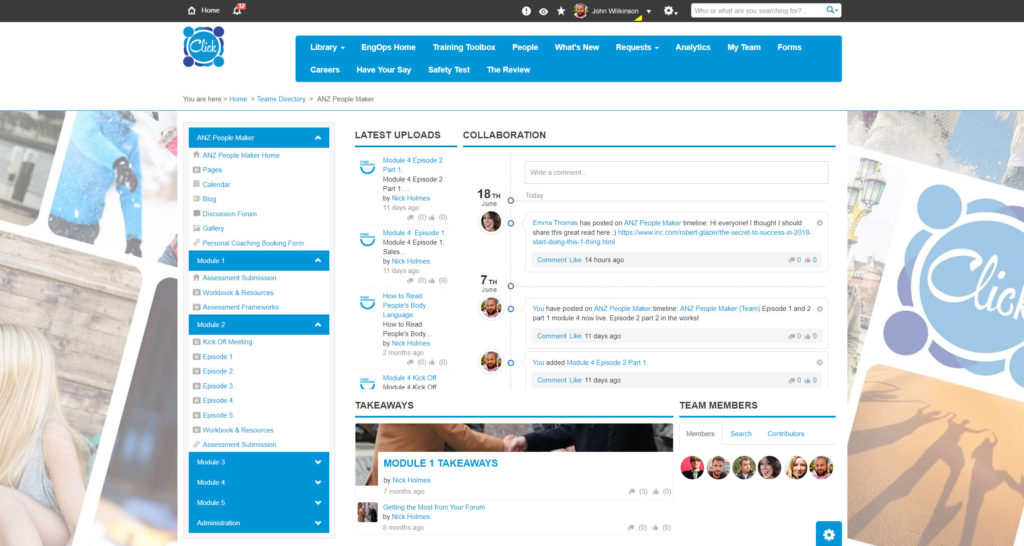5 Benefits of a social intranet platform
Creating a social environment at work has negative connotations. But can an organization and its people benefit from incorporating a social intranet into their work life?
We live in a world where the boundaries of work and office space are changing. With flexible hours, remote working, and dispersed workforces operating in a digital workplace, a new era has opened up where collaboration and communication within a company have had to adapt to fit within this transformation.
At the heart of this is the social intranet, a place where meaningful connections and real-time communication – integral to modern business – are possible. But how can being ‘social’ result in more productivity?
Download the essential guide to internal comms
How socializing can be productive
For many organizations, a social intranet is the missing jigsaw piece to the modern office. In this era of change, many tools and devices have been used to integrate staff with the digital workplace. What a social intranet does is pick up and achieves what these other services have tried and failed to do. A social intranet takes the best parts of social media platforms, team sites, and portals to create a place where there is ease of collaboration, self-generated content, freedom to communicate and quick access to people outside your immediate remit.
The features that a social intranet can boost include flexible management systems, engaging collaboration features, and powerful search capabilities. The end result is productivity that is maximized, knowledge and ideas that are shared, and the building of communities across organizations. Take this away from a business, and you risk isolation, stagnation and even decline.
A social intranet borrows all the rich social features – like, tagging, blogging, liking, sharing, commenting – to ease the way people connect in a business setting. So, while a social intranet allows your employees to upload photos of their weekend, their new dog or comment on a person’s status, the universality of the system means that people are more inclined to use it for work purposes. So, when it comes to getting in touch with someone in another office in another country – even in another language – a social intranet greases the wheels.
The social intranet’s role in the digital workplace
The past decade has been a learning curve for businesses big and small. Not just in terms of technology, but the way we connect and exchange information continues to change and evolve. What many organizations have discovered is that the flexibility of a social intranet can accommodate these twists and turns with its ability to integrate applications and develop new functions.
Smartphones and BYOD (bring your own device) are now commonplace in workspaces all over the world. There is little boundary between cell phones and laptops and PCs – a lot of work can be easily completed on a phone or a computer. With this in mind, the intranet has had to adapt to provide mobile-enabled features that can support the shift to a digitally-focused workforce.
This has eased the pathway for people across the world to build a virtual office wherever they are. Connecting, collaborating and communicating with a colleague across the world has never been easier.
Real life examples of social intranets at work
So how else is a socialized intranet helping modern businesses right now? We have illuminating examples of how some of our clients have tailored their software to become the social intranets that their organizations need and use every day to form strong connections and rewarding collaborative efforts.
We look at some of them and discover the innovative ways that can be found to maximize the effectiveness of your social intranet.
Download the essential guide to internal comms
1. Creating employee recognition programs that boost engagement
Social intranet example: MidPen Housing
While you are cultivating a positive culture at work, where are you at with employee recognition? Many companies play down employee recognition, regarding it as an expensive endeavor that pays little dividend. In fact, recognizing your workers is one of the most important things you can do to boost morale, productivity and a sense of employee satisfaction. A social intranet is one of the best ways to operate this type of program, providing a platform where anyone can say thank you to a peer in front of a company-wide audience.
One business that has used their social intranet to celebrate the people that make up the organization is MidPen Housing. Their iCare Keys feature of their system has allowed the firm to recognize individuals within their company and celebrate hard work and good deeds. Each employee is handed twenty virtual keys each month to give out to their peers. These acknowledgments include one of their company values hashtagged in, to highlight the value that the recipient adds to the company. The keys can then be exchanged for gift vouchers.

Not only are employees showing gratitude to each other, but also acting out their five company values, Integrity, Accountability, Collaboration, Respect and Excellence every day. Kim Bratcher from MidPen has seen employee recognition surge beyond all expectation since their collaboration with Interact and the introduction of iCare Keys: “Today, more employee recognition is shared on a DAILY basis than what we experienced on an ANNUAL basis through our previous program”.
2. Providing a platform for every worker to speak up
Social intranet example: Travelex
Working in a large, global company, it is very easy to become invisible. A company that doesn’t notice, recognize or celebrate their employees will experience low retention levels and high absentee rates. By giving employees a voice, a social intranet will help remove barriers like location, language or seniority that often impede significant connections.
Winner of ‘Best Social Intranet’ at the 2017 Ragan Awards, Travelex decided that the key to popularizing their intranet was to make it a place where people could share opinions and ideas on a diverse range of subjects. This has allowed the company to build a highly active community – with employees writing blogs (with an average of 11 unique blogs uploaded each day) and sharing personal stories from all levels of the business. So what value does this have to a business?


Tricia Scott, global intranet manager for Travelex, regards this open attitude in a work environment invaluable. “Our intranet – The Lounge – has given our colleagues the means to broaden their relationships at work by connecting our people all around the world. Today they can discuss and relate to their co-workers in similar roles on different continents. It’s something that’s now giving rise to more sophisticated uses of the platform, where our people are utilizing it to help problem-solve and innovate to fix genuine customer issues based on the experiences they share with the community.”
3. Establishing a space for ideation and knowledge sharing
Social intranet
Geographically dispersed workforces may be a necessary feature of a business that has a large reach, but when it comes to communication, knowledge sharing really suffers. How can one department have an in-depth discussion with another department in an effective and efficient manner? Empowering co-workers who can connect with each other, share ideas and collaborate is one of the key features of a social intranet.
Within desks, hubs and departments, there is a lot of informal knowledge sharing going on. Without realizing it, chats, questions, and conversations can develop an idea way past a thought or concept. How can you extend this over an entire organization spread out across countries and continents?
One way of accomplishing this is by identifying key members of your team and then helping them to become internal influencers. Look for those team members who regularly comment and support other employees, and then offer them extra coaching (and even incentives) to continue this invaluable role..
Download the essential guide to internal comms
4. Fostering a positive company culture
Social intranet example: AO.com
While an intranet is a perfect platform for celebrating employee achievements and finding out more about each individual, it can also work the other way. The company can present new initiatives, upcoming events and broadcast various successes within the company regularly. This fortifies the internal brand, motivates the workforce and encourages confidence. This is, in turn, enriches the workplace culture, alongside the more physical manifestations of decor, layout and the tools and resources available within the office space. For those individuals who work remotely or are geographically dispersed away from the physical office, these employee portal examples form a connection with the main hub, and a vital part of making those workers feel part of the organization.
When it comes to building a workplace culture for both office and front-line workers, AO.com, have had great success with their social intranet, The Fridge. The system, a collaboration with Interact, shows the most recent company news prominently on their homepage, as well as a Day in the Life feature, which turns the spotlight on a separate employee. Employees within AO.com work in various departments, from depots to head office, in delivery vehicles to warehouse operatives. This creates a highly engaging and dynamic hub that helps keep people informed, connected and part of the bigger picture.
“We have regular features on The Fridge every day to engage people and to promote social interactions between colleagues and teams,” says Laura Talbot, internal communications manager at AO.com. “These include everything from fun GIFs to competitions to win tickets to Britain’s Got Talent, which we proudly sponsor.”
To draw workers in from wherever they are based, the company intranet has relevant features which offer something different every day. Tuesday has retail news so employees can keep up to date with competitors, while Thursday offers ‘Something for the weekend’ which allows people to share things to do at the weekend.
5. Making the intranet relevant to everyone in the organization
Social intranet example: Magic Memories
Of course, in order for people to visit your intranet, you need to make it relevant to them. Ensuring that the content you load and the new your broadcast is read and digested, it’s important to remember who your audience is. One of the biggest mistakes is uploading information that isn’t pertinent to the majority of the workforce. When people receive messages and news that isn’t applicable to their role, interests or situation, engagement drops and people stop tuning in. And an intranet without people is just a piece of software. That’s why it’s so important to make your intranet relevant to everyone.

Magic Memories worked hard replacing their overburdened, slow-moving and out-of-date intranet to Interact software. Working closely with our team of designers, developers, and strategists, the company established an intranet that provided one source of truth, training programs and a place where employees could gather for questions and answers, discussions and a catch up of company developments. This helped their social intranet, ‘Click’, to become a major part of the employee experience at Magic Memories. While the homepage stays universal across the organization, it is also used regionally, meaning there are different pages for different members of the organization, with information being split regionally to keep content relevant.
“Finally, we have a place where we can actually talk to people and ask the questions that we’ve wanted to ask and get the information we wanted to get.” Nick Holmes, Group Learning & Development Lead at Magic Memories.
What can social intranets teach us?
Most importantly, employers should not be scared of increased social activity. With a social intranet, employees can receive updates on research, share ideas and map out the roles and responsibilities of a project – all from one single source. In short, things happen a lot quicker when social engagement is harnessed in the workplace.
In a report from McKinsey, research supports the idea that socializing the workplace is a sure-fire way to boost productivity. “When asked about the most beneficial features of the social tools their companies use, respondents most often cite real-time interactions, the ability to collaborate with specific groups, and cross-platform availability (Exhibit 1). What’s more, respondents believe the same three features will most improve how people work at their organizations in the future.” These same features are incorporated into social intranets.
Not only this, but social intranets drive the digitization of businesses. Previously, the main focus of digitizing was in customer-facing processes. Social intranets bring the spotlight on internal processes, and how work can be improved by digitization.
Social tools are key to how information flows through a company. If you improve this, you improve how people work and influence new forms of organizations. These same tools can align themselves with the use of other technologies. According to the McKinsey report, companies see even more benefits from social when they digitize business processes and use data-driven insights at the same time. This means that the best-performing companies have the edge as they are more likely to use digital, social, and analytic technology to stay ahead of their competition.
The rise of the social intranet is in no small part down to a need to move on from email as the default channel for business communication. With an emphasis on team-collaboration, a new generation of tools have been developed for the modern-day organization. And there is still some way to go, as technology is developed to improve the way employees work together and communicate. While bots and artificial intelligence are being beta-tested, the emphasis right now is making social intranet tools as intuitive and integrated into work life as possible.
So what’s next for the social intranet?

Social intranets will continue to adapt and evolve to trends in communication and collaboration, particularly those used in social media. Their focus should be on next-generation features and their integration into intranet software. As with every new generation that joins the workplace, expectations for the digital tools on offer will be high, so it’s important to keep ahead of the curve when it comes to all office tech, particularly developments in work intranets.
Another responsibility is to cut down on noise. With so many different departments, events, and updates, there is a danger that there an overwhelming amount of information on display. Intranets will develop the algorithms to customize homepages to the user’s needs, interests and requirements.
The future suggests a social intranet that is intuitive, adaptable to most integrations, and unique to the user. But most importantly, ever-evolving alongside the digital workplace.

